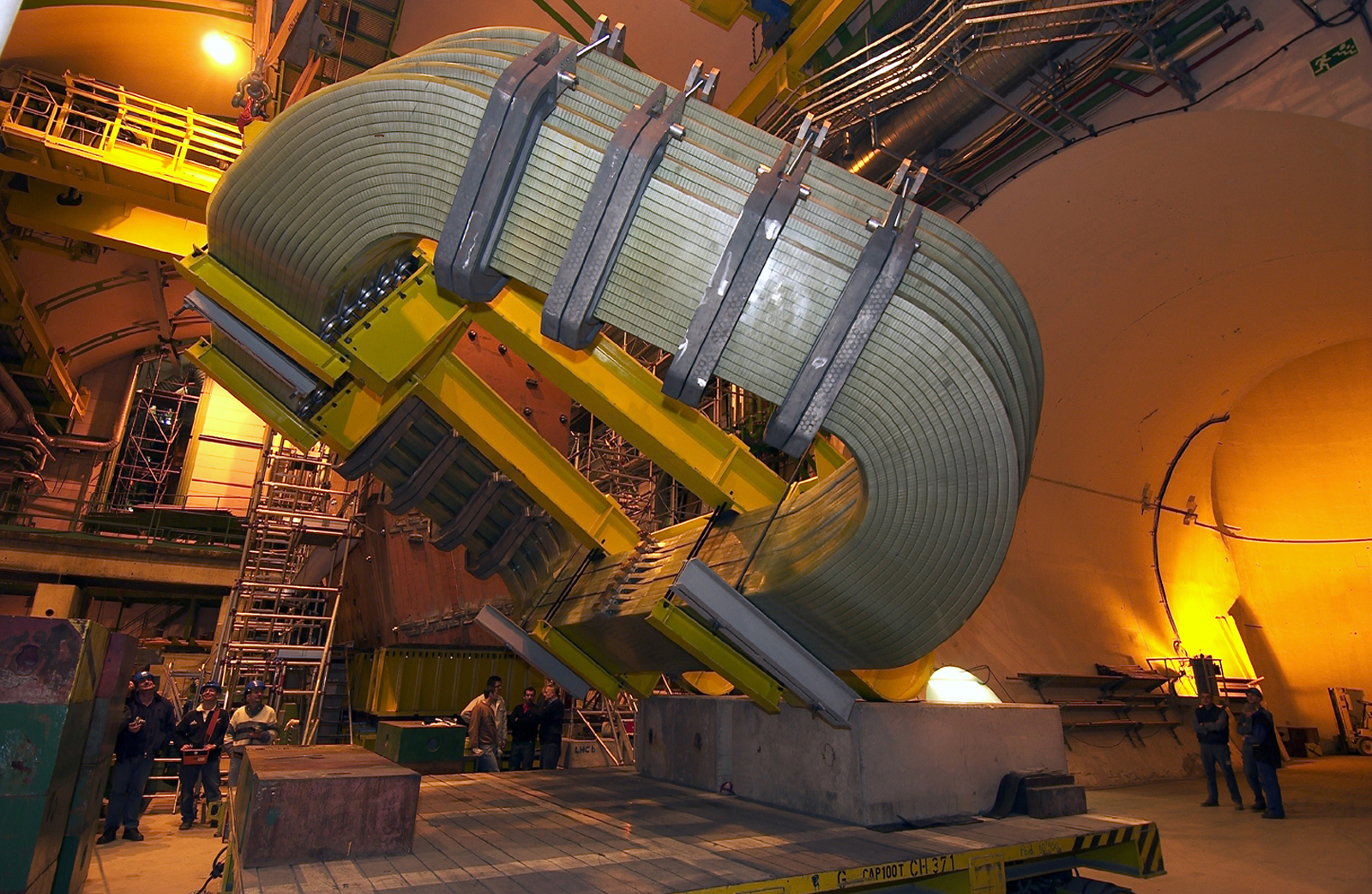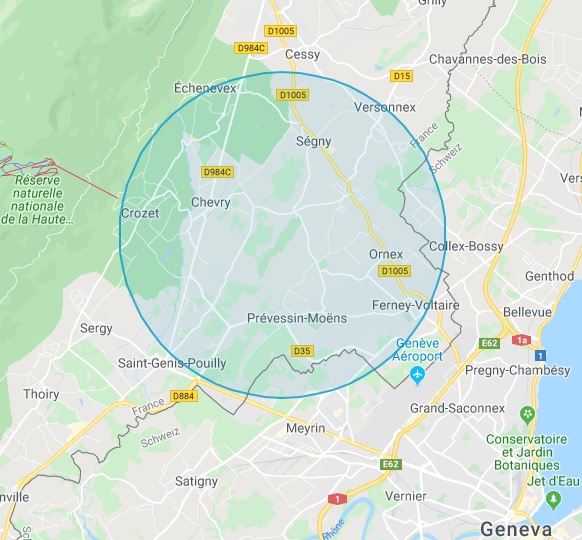Taking a closer look at LHC
|
LHC is the most powerful particle accelerator in the world and it´s located in CERN on the France-Swiss border. It uses part of the same structure as the former accelerator (LEP), and it has a circumference of 27 km long and runs 100 m underground.
To get an impression of its size you can use a website where one can move the LHC on a map: https://howlargeisthelhc.com
One the website, on can also add other (future) colliders, or share a specific view and collider selection via a link. For example, this here is the LHC and SPS at Santiago de Compostela (Spain). |
|
In the section PHYSICS AT LHC we present the main LHC parameters, here we introduce in short some of them.
|
|
|
L A R G E : The size of an accelerator is related to the maximum energy obtainable. In the case of a collider or storage ring, this is a function of the radius of the machine and the strength of the dipole magnetic fieldthat keeps particles on their orbits. The LHC uses some of the most powerful dipoles and radiofrequency cavities in existence. The size of the tunnel, magnets, cavities and other essential elements of the machine, represent the main constraints that determine the design energy of 7 TeV per proton.
|
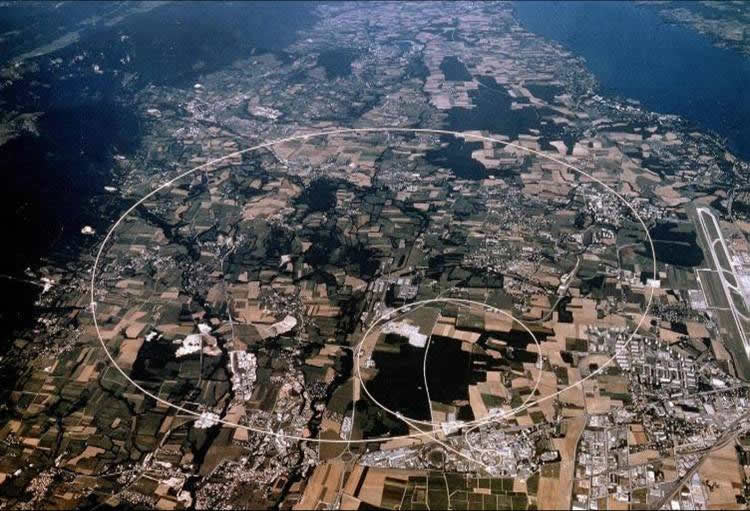 |
There are eight elevators leading down into the tunnel, and although the ride is only one stop, it takes a whole minute. To move between the eight access points, maintenance and security people use bicycles to move around the tunnel – sometimes for several kilometres. The LHC is automatically operated from a central control centre, so once the experiments have started, engineers and technicians will only have to access the tunnel for maintenance.
|
H A D R O N: The LHC accelerates two beams of particles of the same kind, either protons or lead ions, which are hadrons. A hadron, in particle physics, is anystrongly interacting composite subatomic particle. All hadrons are composed of quarks (i.e.: protons and neutrons). There are two types of hadrons: baryons (three quarks, like protons or neutrons) and mesons (quark-antiquark, like pions and mesons B). |
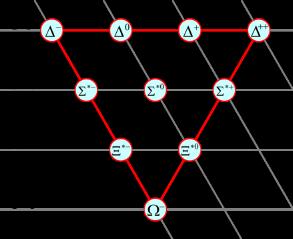 |
|
C O L L I D E R: A collider (that is a machine where counter-circulating beams collide) has a big advantage over accelerators where a beam collides with a stationary target (See here...). When two beams collide, the energy of the collision is the sum of the energies of the two beams: (√s = 2·E) --> E =2·Ebeam (more information here...) LHC is designed to reach a total collision energy of:
E =14 TeV
|
 |
As it's been said before, the LHC was built into a tunnel that already existed. The tunnel had a diameter of 3.0 m. We can make the approximation that a very thin circular tunnel is the same as a tunnel of the same diameter but straight.

Let’s calculate the volume of the tunnel:
V = π·r2 ·L ⇒ V = π·1,52·27000 ⇒ V = 191000 m3
The mass of the rock that was dug out to form the tunnel, assuming an average density of 5000 kg/m3,
M= d·V ⇒ M = 5000·191000 ⇒ M = 106 tonnes
So, 76 olympic pools could be filled with this amount of rock.
|
In the pipes where protons travel a high vacuum is required. The pressure in some parts is over 10-9 Pa. The two beams are made up of cylinder-like bunches 7,48 cm long and ~16x16 micras sction (1 millimetre wide when they are far from a collision point).
With this section it is expected to reach a number of collisons of:
|
Between each consecutive bunch there are 7,5 m. Taking bunches moving at almost the speed of light around the 27 kilometre ring of the LHC, we can easily calculate other important parameter:
time between bunches = 7,5/3·108
Bunch spacing = 2,5·10-8 s
Bunch spacing = 25 ns
Besides, with that circumference of 27 km there should be:
26659 / 7,5 ~ 3550 bunches. |
The effective number of bunches is 2808.
So the rate of "bunches with protons" is: f = (2808/3550) ~ 0,8
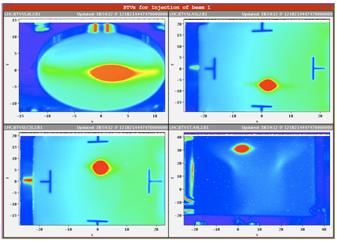
With 11245 crosses per second we get:
11245 x 2808 ~ 32 millions crosses/s , the "average crossing rate".
And the number of collisions per second
20 x 32 millions de crosses/s ~ 600 millions collision/s
If we consider 3550 bunches: 11245 x 3550 = 40 millions crosses ⇒ 40 MHz
More complet dicussion here...
|
AUTHORS Xabier Cid Vidal, PhD in experimental Particle Physics for Santiago University (USC). Research Fellow in experimental Particle Physics at CERN from January 2013 to Decembre 2015. He was until 2022 linked to the Department of Particle Physics of the USC as a "Juan de La Cierva", "Ramon y Cajal" fellow (Spanish Postdoctoral Senior Grants), and Associate Professor. Since 2023 is Senior Lecturer in that Department.(ORCID). Ramon Cid Manzano, until his retirement in 2020 was secondary school Physics Teacher at IES de SAR (Santiago - Spain), and part-time Lecturer (Profesor Asociado) in Faculty of Education at the University of Santiago (Spain). He has a Degree in Physics and in Chemistry, and he is PhD for Santiago University (USC) (ORCID). |
CERN CERN Experimental Physics Department CERN and the Environment |
LHC |
IMPORTANT NOTICE
For the bibliography used when writing this Section please go to the References Section
© Xabier Cid Vidal & Ramon Cid - rcid@lhc-closer.es | SANTIAGO (SPAIN) |



